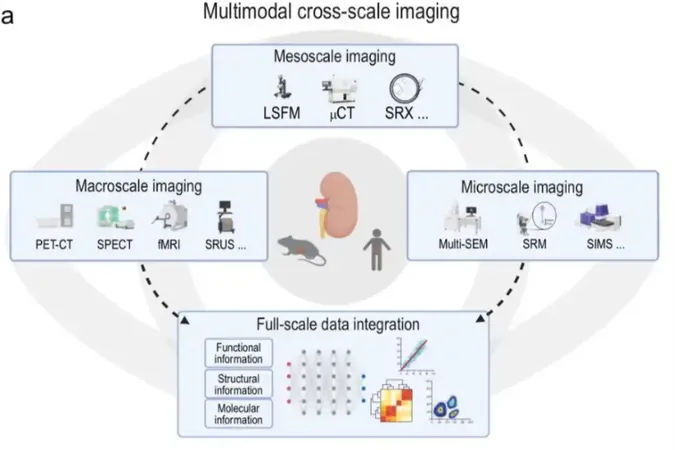
The Shadow of COVID-19: Uncovering the Hidden Deaths Five Years Later
2025-03-20
Author: Arjun
The Uncertain Counts of COVID-19 Related Deaths
As we reflect on the five-year anniversary of the COVID-19 pandemic, a shocking reality continues to linger: the true counts of related deaths remain uncertain, and research into these fatalities is stymied by inadequate data.
In the chaotic early days of the pandemic, hospitals were overwhelmed with cases, but the broader impact on community mortality was poorly documented. This lack of comprehensive data raised alarm bells for both policymakers and researchers, who discovered a disconcerting trend—many COVID-19-related deaths went unrecorded. A study examining over 3,000 U.S. counties from March 2020 to August 2022 revealed nearly 163,000 excess deaths from natural causes that never made it into official reports.
"Excess deaths," which refer to fatalities above the expected historical averages, have become a crucial metric for understanding the scale of underreported deaths during health crises. These previously uncounted fatalities were eventually linked to COVID-19 through detailed reviews of medical records, death certificates, and statistical analyses.
The implications of this data shortfall extend beyond mere numbers. The absence of timely mortality tracking hampered vaccine development efforts, delaying critical insights into effective treatments and response strategies for emerging variants.
A Call for Improved Data Infrastructure
How can the U.S. enhance its mortality data system? Experts recommend significant reforms to streamline the flow of data. The current structure, which adds approximately 2.8 million death records to the U.S. system annually, faces serious inefficiencies. In 2022, despite the record number of deaths reported—3,279,857—there's a consensus that this figure represents a severe undercount of true COVID-19-related excess deaths.
Essential information included in death records, such as causes of death, demographic data, and medical histories, is indispensable for researchers seeking to identify health trends and disparities. Yet, outdated systems have stymied the continuous collection and analysis of mortality data. The integration of electronic health records, lab reports, and public health surveillance systems is paramount for timely insights, but antiquated practices and a lack of standardization have hindered progress, especially during a public health emergency of this magnitude.
A Historical Perspective on U.S. Mortality Data
The evolution of the U.S. mortality data system has been a patchy journey over the last century and a half. Its inception took root in the 1850s when the U.S. Census Bureau began compiling death statistics during the decennial census. However, early efforts were inconsistent, as death registrations were often voluntary and varied significantly from state to state.
The 20th century saw the establishment of the National Vital Statistics System, which introduced greater standardization to how states recorded deaths. However, challenges remained, with states submitting data on their schedules, leading to discrepancies and delays in reporting.
In 1981, the introduction of the National Death Index aimed to centralize death record tracking to assist medical research, moving from a paper-based system to a more digital approach over the years. However, problems such as high fees and varying state reporting times still exist, complicating access to crucial mortality data.
Navigating the Future of Mortality Data
The recent trend of governmental removal of public health datasets, particularly those from the CDC, raises concerns about the future of mortality data reform. Experts worry that such actions may lead to further obfuscation of vital information needed during public health crises.
As we look ahead, the stark reality is that the U.S. mortality tracking system is ill-equipped to handle emerging public health threats. Without addressing these systemic issues, the nation risks being unprepared to effectively respond to future crises that directly threaten lives.
Are We Prepared for What Comes Next?
The pressing question remains: how much longer can we afford to remain in the dark about our health data? Concerted action and reform are needed now more than ever to safeguard public health in the future.


 Brasil (PT)
Brasil (PT)
 Canada (EN)
Canada (EN)
 Chile (ES)
Chile (ES)
 Česko (CS)
Česko (CS)
 대한민국 (KO)
대한민국 (KO)
 España (ES)
España (ES)
 France (FR)
France (FR)
 Hong Kong (EN)
Hong Kong (EN)
 Italia (IT)
Italia (IT)
 日本 (JA)
日本 (JA)
 Magyarország (HU)
Magyarország (HU)
 Norge (NO)
Norge (NO)
 Polska (PL)
Polska (PL)
 Schweiz (DE)
Schweiz (DE)
 Singapore (EN)
Singapore (EN)
 Sverige (SV)
Sverige (SV)
 Suomi (FI)
Suomi (FI)
 Türkiye (TR)
Türkiye (TR)
 الإمارات العربية المتحدة (AR)
الإمارات العربية المتحدة (AR)